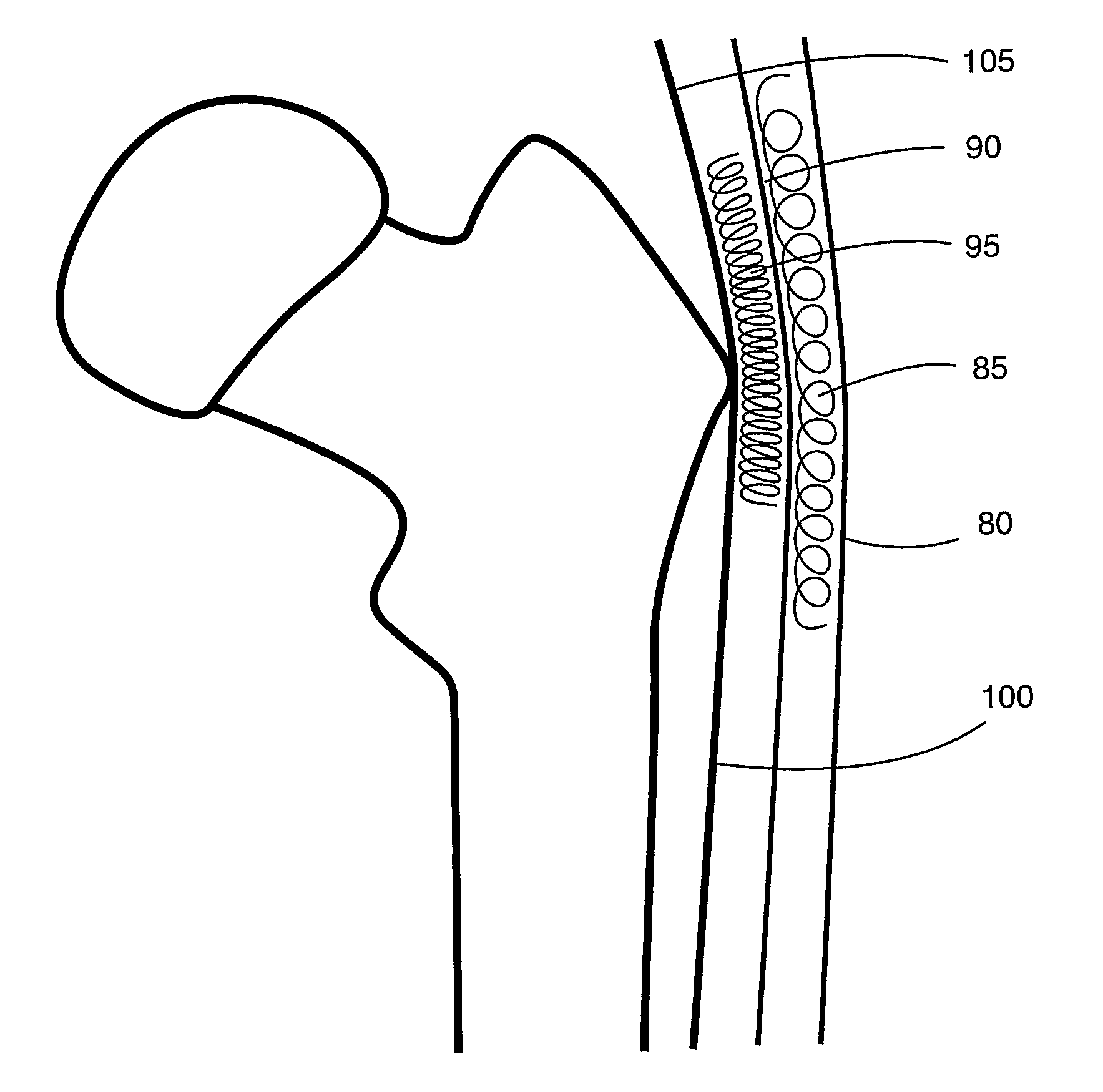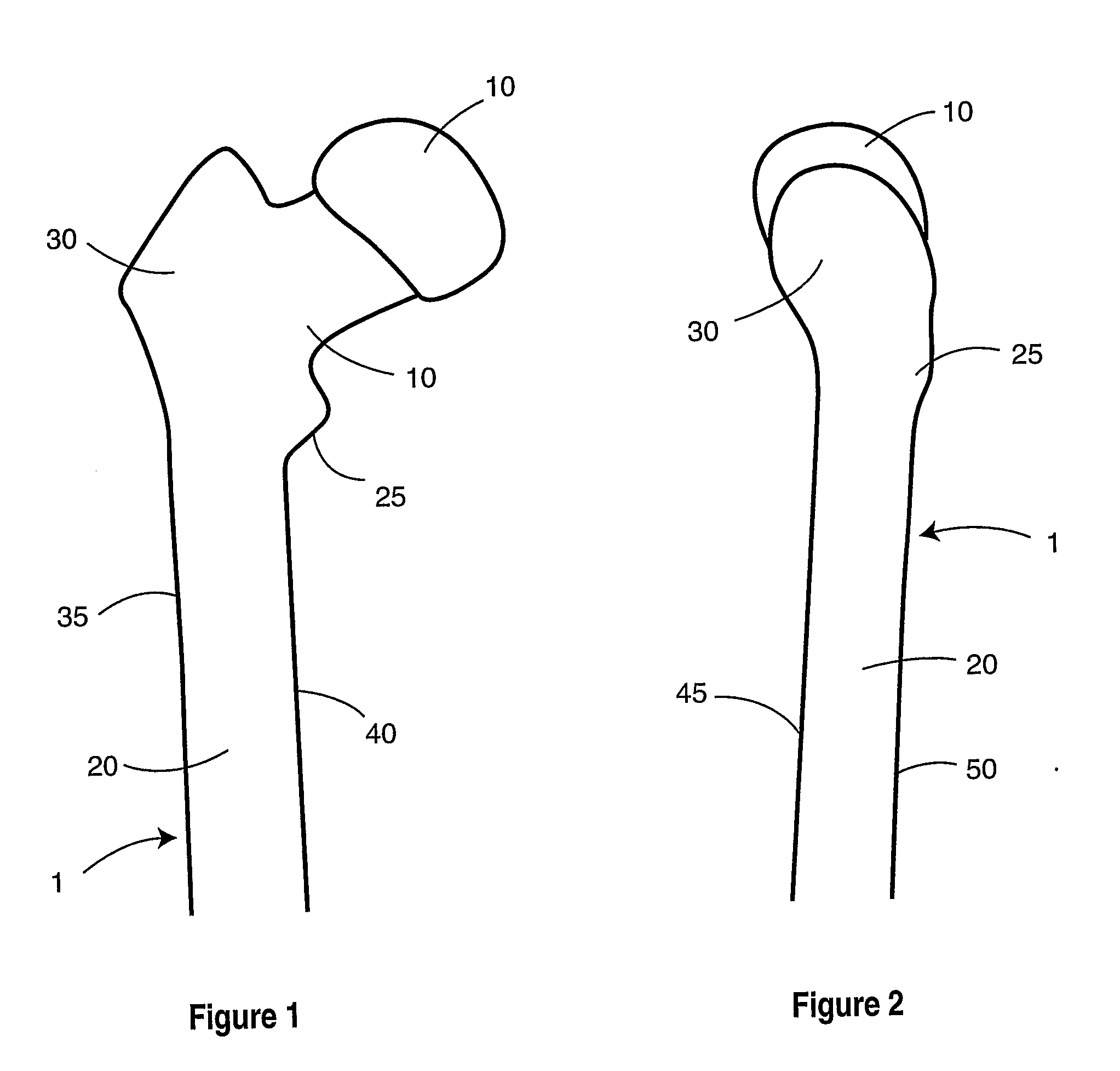Hip protector implant
a technology of hip protector and implant, which is applied in the field of implants, can solve the problems of reducing fracture risk and reducing energy transfer to the proximal, and achieve the effects of reducing peak pressure and peak stress, reducing fracture risk, and increasing the contact area involved in impa
- Summary
- Abstract
- Description
- Claims
- Application Information
AI Technical Summary
Benefits of technology
Problems solved by technology
Method used
Image
Examples
Embodiment Construction
[0072]FIGS. 1 through 3 provide views of proximal femur 1. Components of the femur, as seen in FIGS. 1 through 3, include femoral head 10, femoral neck 15, femoral shaft 20, lesser trochanter 25, greater trochanter 30, medial femoral cortex 35, lateral femoral cortex 40, anterior femoral cortex 45, and posterior femoral cortex 50. Blood supply 55 runs from femoral neck 15 to femoral head 10.
[0073]FIGS. 4 and 5 show typical fractures that may occur in the femur. Femoral neck fracture 60 occurs in femoral neck 15. Intertrochanteric fracture 65 occurs in the lesser trochanter 25 or greater trochanter 30. Subtrochanteric fracture 70 occurs below lesser trochanter 25. In a typical fall area 75 absorbs the direct impact.
[0074]FIG. 6 shows the soft tissue surrounding the femur. Skin 80 forms an outer layer. Subcutaneous soft tissue 85 is beneath skin 80. Fascia lata 90 and bursa 95 are also within the soft tissue. The abductor insertion point 105 and point of origin of the vastus lateralis...
PUM
 Login to View More
Login to View More Abstract
Description
Claims
Application Information
 Login to View More
Login to View More - R&D
- Intellectual Property
- Life Sciences
- Materials
- Tech Scout
- Unparalleled Data Quality
- Higher Quality Content
- 60% Fewer Hallucinations
Browse by: Latest US Patents, China's latest patents, Technical Efficacy Thesaurus, Application Domain, Technology Topic, Popular Technical Reports.
© 2025 PatSnap. All rights reserved.Legal|Privacy policy|Modern Slavery Act Transparency Statement|Sitemap|About US| Contact US: help@patsnap.com



